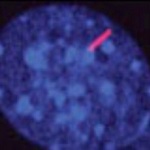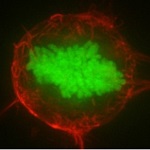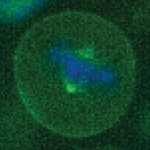The Brownlee laboratory explores the interaction between two fundamental domains of the cell: the plasma membrane and the cytoplasm. The lab’s interdisciplinary approach leverages the powerful Xenopus system in which cytoplasmic extracts prepared from unfertilized frog eggs can reconstitute various cellular processes, such as nuclear and mitotic spindle formation and function, in vitro. To study the interaction between the plasma membrane and cytoplasm as a function of cell size, we have adapted a method of encapsulating DNA-containing cytoplasm in various lipid mixtures using microfluidics. This unique approach published recently (Brownlee and Heald, Cell. 2019), has allowed for the discovery of a novel sensing mechanism of the cellular surface area to volume ratio to regulate organelle size scaling. This pathway is conserved in vivo during frog development as well as in human cells. This is particularly relevant to our understanding of cancer pathology as loss of certain tumor suppressors or overexpression of oncogenes frequently results in organelle size deregulation and can be used diagnostically.
|
Current research utilizes microfluidic approaches while also employing the spatial-temporal control obtained through the use of optogenetics. This research will provide new insight into the underlying principles regulating such fundamental processes as mitotic spindle positioning, cell polarity determination, ciliogenesis, axonogenesis and actin cortex formation. These processes are essential for development and via bility and defective in many human diseases such as cancer.
Xenopus laevis |

Cell-like droplets encapsulating mitotic spindles
|
|
 |
 |
 |
|
| Ciliogenesis | Actin Cortex | Axonogenesis | Spindle Positioning |




